
FTTH - PON
PON is Passive Optical Network featured with one-to-multiple-point architecture. As shown in the following image, it comprises of Optical Line Terminal (OLT), Optical Network Unit and Passive Optical Splitter.
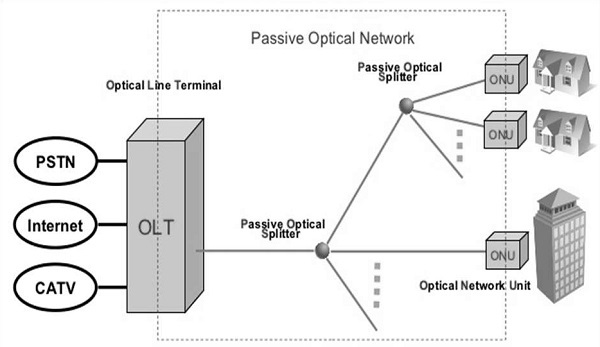
History of PON
The first Passive Optical Network (PON) activity was initiated by the FSAN group in the mid- 1990s. The initial standard covered 155 Mbps transmission based on ATM known as the APON/BPON standard. Later on, the standard enhanced to cover 622 Mbps.
In 2001, the IEEE started the development of an Ethernet based standard known as EPON.
In 2001, the FSAN group started the development of a gigabit speed standard, i.e., GPON, to be ratified by the ITU-T.
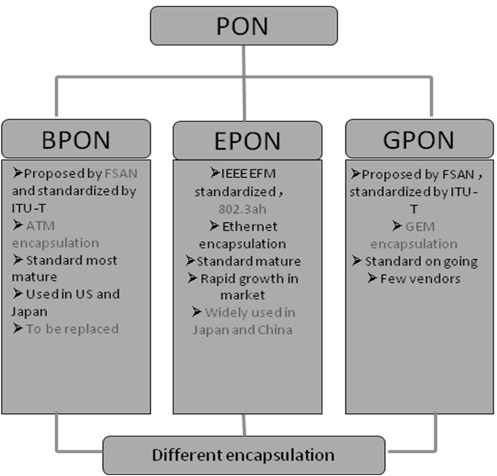
PON Network Architecture
The following illustration shows the network architecture of PON −
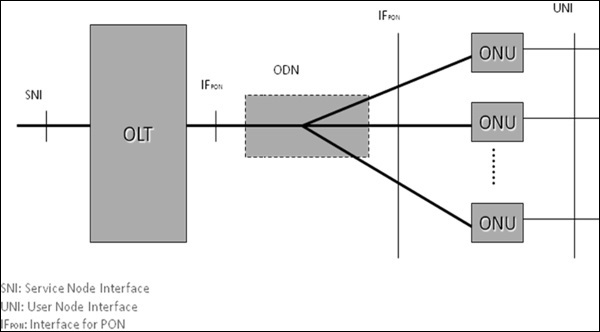
Where,
SNI − Service Node Interface
IFPON − Interface for PON
UNI − User Node Interface
As shown in the above illustration, the ODN may be configured with one or multiple splitters with several cascades.
PON Multiplexing
PON uses WDM to realize bi-directional transport on a single fiber (see the illustration given below) −
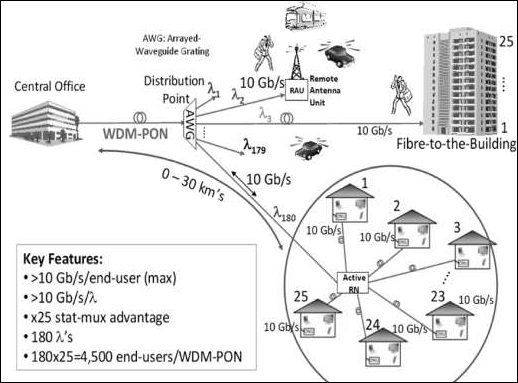
In order to distinguish the signals in two different directions, two multiplexing technologies are adopted, which are −
TDM
TDMA
Let us discuss them in detail −
Time Division Multiplexing (TDM) for downstream − It is a technique of transmitting and receiving separate signals over a common signal path. For this, it uses synchronized switches at each end of the transmission line; resultantly, each signal appears on the line only a fraction of time in an alternating pattern.
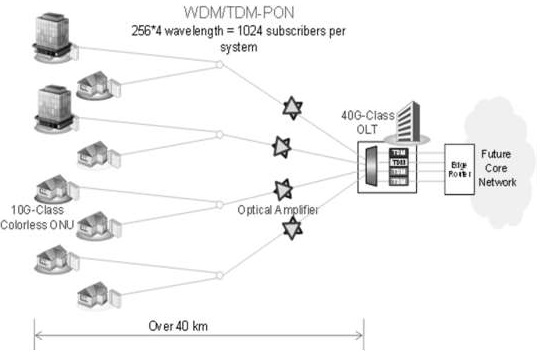
Time Division Multiple Access () for upstream − This technique facilitates many users to share the same frequency channel by dividing the signal into different time slots.
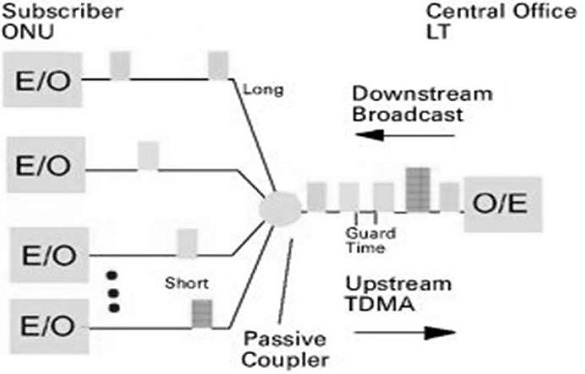
PON: Downstream
Broadcasting mode − Downstream data is broadcasted to all ONUs. But, at the ONU, only the specific packet is processed, and the rest packets are discarded.
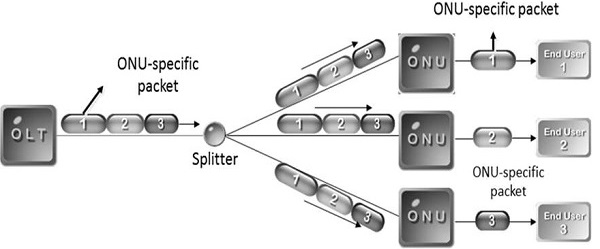
PON: Upstream (TDMA mode)
The following illustration depicts the TDMA mode.
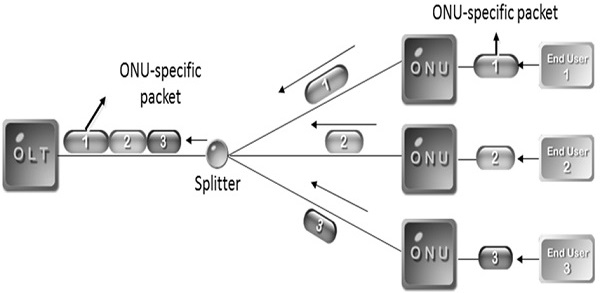
The following illustration shows both the technologies together −
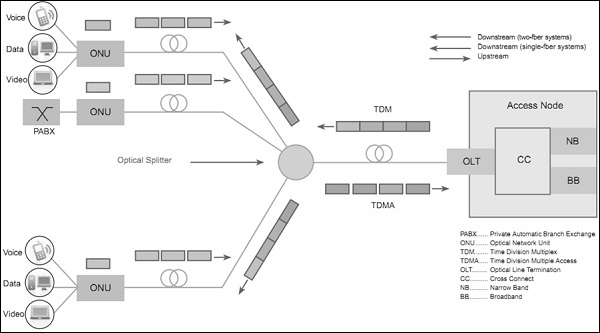
PON Terminologies
Following are the PON terminologies −
ODN (Optical Distribution Network) − An ODN realizes the optical transmission from the OLT towards the users and vice versa. It utilizes passive optical components.
OLT (Optical Line Termination) − An OLT is the service provider endpoint of a PON and is placed in a CO or head end.
ONT/ONU (Optical Network Termination) − An ONT is a device that terminates the PON and presents native service interfaces to the user. An ONT is typically located on the customers premises.
PON Access Network
Passive Optical Network (PON) is essentially a cost effective optical fiber based access system that provides triple plays (voice, video, & data) services to both the business and the residential customers. Besides, the simple topology shown in the following illustration, PON can work in other topologies. For example Bus or linear, distributed splitting, etc.
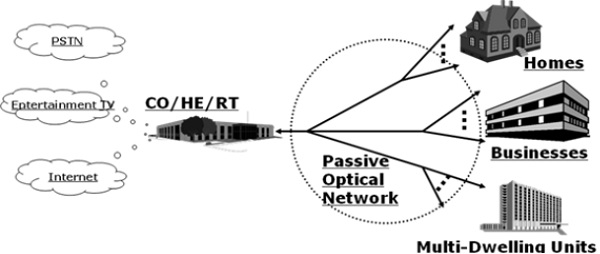
The different types of topology that are used, depends on the customer distribution profile.
An ONT can be connected to PON in any fashion as long as −
Optical budget from ONT to OLT & vice-versa is met.
Specification of maximum differential distance between different ONTs is met.
Fiber length from ONT to OLT is within allowable range.
Limit of maximum number of ONTs that the PON system can support is not exceeded.
Passive Modules in PON
Following are the Passive modules in the PON system −
- WDM Coupler
- 1 × N Splitter
- Optical fiber and cable
- Connector
- ODF/Cabinet/Subrack
Active Modules in PON
Following are the active modules in the PON system −
In OLT −
- Laser transmitter (1490-nm)
- Laser receivers (1310-nm)
- For CATV application
- Laser amplifier (1550-nm)
- EDFA for amplifying video signal
In ONU −
- X`Power/Battery for ONU
- Laser transmitter (1310-nm)
- Laser receivers (1490-nm)
- Receivers for CATV signal (1550-nm)
In the next chapter, we will understand what Gigabit Passive Optical Networks are.